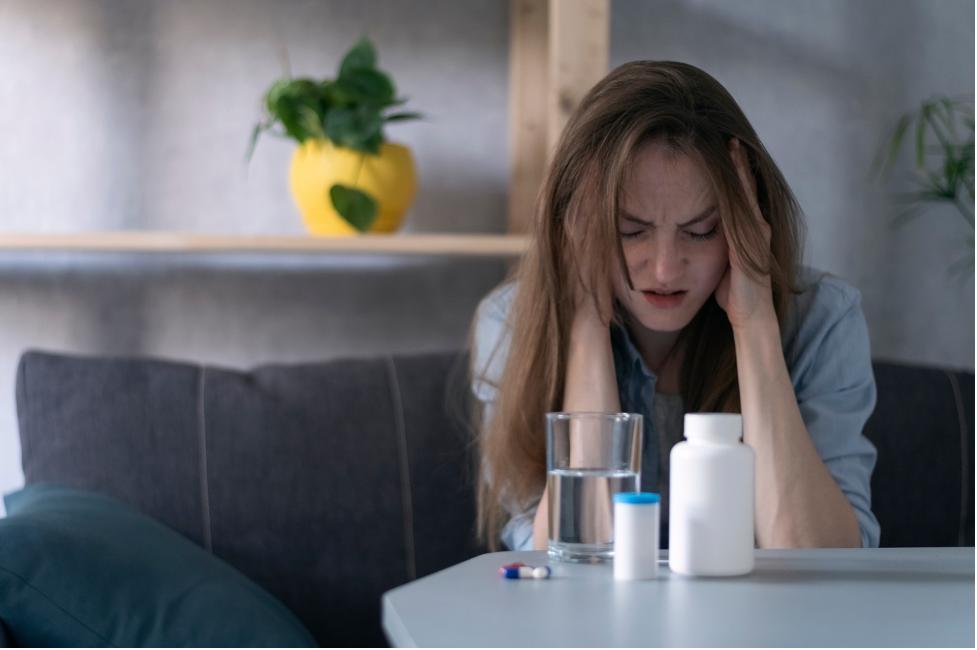Self-medication is a common but harmful coping strategy where individuals turn to alcohol or drugs to manage emotional pain, stress, or mental health conditions.
While substances may provide temporary relief, they often worsen the very symptoms they are meant to alleviate.
This leads to a vicious cycle in which reliance on substances grows stronger, while mental and physical health deteriorate.
What is Self-Medication?
Self-medication refers to the use of substances—such as alcohol, prescription drugs, or illegal drugs—without medical guidance, often to ease symptoms of mental health issues like anxiety, depression, PTSD, or stress. Instead of resolving underlying issues, this behavior masks symptoms, delaying proper treatment and increasing vulnerability to addiction.
Why People Self-Medicate?
There are several reasons why individuals resort to self-medication:
- Temporary Relief – Substances can dull painful emotions or reduce anxiety in the short term.
- Accessibility – Alcohol and certain medications are easily available, making them quick fixes.
- Stigma – Fear of judgment may prevent people from seeking professional help, leading them to self-manage their symptoms.
- Unawareness – Many people don’t recognize they have a treatable mental health disorder and instead focus on numbing symptoms.
The Cycle of Self-Medication
The self-medication cycle usually follows this pattern:
- Emotional Pain or Mental Health Symptoms
- The individual experiences distress from trauma, anxiety, or depression.
- The individual experiences distress from trauma, anxiety, or depression.
- Turning to Substances for Relief
- Alcohol or drugs temporarily reduce symptoms, providing a sense of calm, euphoria, or escape.
- Alcohol or drugs temporarily reduce symptoms, providing a sense of calm, euphoria, or escape.
- Short-Term Benefit, Long-Term Harm
- The effects wear off quickly, leaving the person feeling worse than before.
- Substance use begins altering brain chemistry, increasing cravings.
- The effects wear off quickly, leaving the person feeling worse than before.
- Worsening of Mental Health
- Instead of healing, depression, anxiety, or trauma symptoms intensify.
- Feelings of guilt, shame, and hopelessness often emerge.
- Instead of healing, depression, anxiety, or trauma symptoms intensify.
- Increased Dependence and Addiction
- Higher doses are needed to achieve the same effect, leading to tolerance.
- Dependence forms, trapping the individual in the cycle.
- Higher doses are needed to achieve the same effect, leading to tolerance.
This loop perpetuates itself until intervention and treatment occur.
Mental Health Conditions Most Associated With Self-Medication
- Depression: Alcohol is often used to “numb” sadness, though it deepens depressive symptoms.
- Anxiety: Drugs or alcohol may temporarily ease tension but often increase long-term anxiety.
- PTSD: Traumatic flashbacks and hyperarousal frequently push survivors toward substance use.
- Bipolar Disorder: Individuals may misuse stimulants or alcohol to manage mood swings.
Consequences of Self-Medication
- Physical Health Risks: Liver disease, heart problems, weakened immune system.
- Mental Health Decline: Increased severity of depression, anxiety, or psychosis.
- Addiction: High risk of developing substance use disorders.
- Relationship Strain: Isolation, mistrust, and conflict with loved ones.
- Delayed Recovery: The longer treatment is postponed, the harder recovery becomes.
Breaking the Cycle
- Awareness and Education
- Recognizing self-medication patterns is the first step toward recovery.
- Recognizing self-medication patterns is the first step toward recovery.
- Professional Treatment
- Integrated Care: Treating both substance use disorder and mental health issues simultaneously.
- Therapy: Cognitive Behavioral Therapy (CBT), trauma therapy, and mindfulness practices.
- Medication: Prescribed antidepressants, mood stabilizers, or non-addictive anxiety medications.
- Integrated Care: Treating both substance use disorder and mental health issues simultaneously.
- Healthy Coping Mechanisms
- Exercise, meditation, journaling, and creative outlets reduce reliance on substances.
- Exercise, meditation, journaling, and creative outlets reduce reliance on substances.
- Support Networks
- Peer groups, 12-step programs, and family therapy provide encouragement and accountability.
- Peer groups, 12-step programs, and family therapy provide encouragement and accountability.
Conclusion
The cycle of self-medication is powerful but not unbreakable. While drugs and alcohol may provide fleeting relief, they trap individuals in a downward spiral of worsening mental health and growing addiction.
By addressing root causes through therapy, medical care, and healthy coping strategies, recovery becomes possible.
The key lies in replacing substances with sustainable forms of healing and support, ensuring a future not defined by addiction but by resilience and growth.
Keep an eye for more latest news & updates on Daily!



